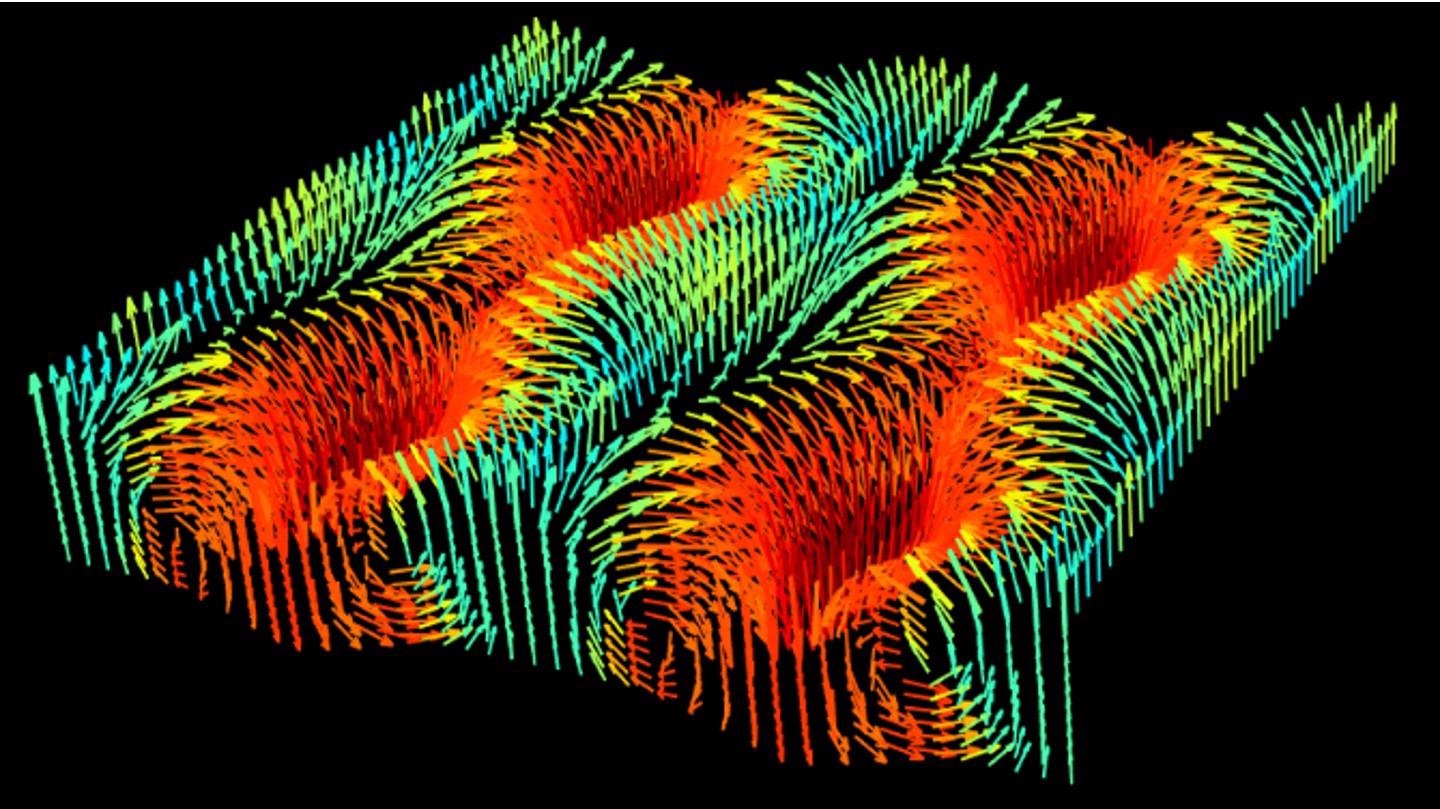Ferromagnetic materials possess a self-generating magnetic field, while ferroelectric materials produce their own electrical field. Although magnetic and electric fields are related, physics emphasizes that they are very different groups of material.
 The image represents the 3D model of the polarization pattern in the ferroelectric PbTiO3 representing the cycloidal modulation of the vortex core. Image Credit: University of Warwick
The image represents the 3D model of the polarization pattern in the ferroelectric PbTiO3 representing the cycloidal modulation of the vortex core. Image Credit: University of Warwick
Currently, the discovery by University of Warwick-led researchers of a multifaceted electrical “vortex”-like pattern that mirrors its magnetic equivalent indicates that they could really be two sides of the same coin.
The new study, detailed in the journal Nature, was financially backed by the Engineering and Physical Sciences Research Council (EPSRC), part of UK Research and Innovation, and the Royal Society. The results of the study offer the first proof of a process in ferroelectric materials comparable to the Dzyaloshinskii–Moriya interaction in ferromagnets.
This specific interaction has a fundamental role to play in stabilizing topological magnetic structures, such as skyrmions, and it might be vital for prospective new electronic technologies using their electrical analogs.
For a number of years, bulk ferroelectric crystals have been used in a variety of technologies including audio transducers sonar, and actuators. All these technologies make use of the intrinsic electric dipoles and their interconnection between the material’s crystal structure and applied fields.
For this research, the researchers developed a thin film of the ferroelectric lead titanate placed between layers of the ferromagnet strontium ruthenate, each approximately 4 nm thick—only two times the thickness of one strand of DNA.
While the atoms of the two materials produce a single continuous crystal structure, in the ferroelectric lead titanate layer, the electric polarization would typically produce numerous “domains,” like a honeycomb. These domains can be viewed only with advanced transmission electron microscopy and x-ray scattering.
But when the researchers from the University of Warwick studied the structure of the combined layers, they observed that the domains in the lead titanate were a multifaceted topological structure of lines of vortexes, revolving alternately in various directions.
Nearly identical behavior has also been witnessed in ferromagnets where it is said to be produced by the Dzyaloshinskii–Moriya interaction.
If you look at how these characteristics scale down, the difference between ferromagnetism and ferroelectricity becomes less and less important. It might be that they will merge at some point in one unique material. This could be artificial and combine very small ferromagnets and ferroelectrics to take advantage of these topological features. It’s very clear to me that we are at the tip of the iceberg as far as where this research is going to go.
Marin Alexe, Study Lead Author and Professor Department of Physics, University of Warwick
Co-author Dorin Rusu, a postgraduate student at the University of Warwick, stated: “Realising that in ferroelectrics dipolar textures that mimic their magnetic counterpart to such a degree ensures further research into the fundamental physics that drives such similarities. This result is not a trivial matter when you consider the difference in the origin and strengths of the electric and magnetic fields.”
The existence of these vortexes had earlier been speculated, but it required the use of modern transmission electron microscopes at the University of Warwick, as well as the use of synchrotrons at four other facilities, to clearly view them. These methods allowed the researchers to assess the position of every atom to a high level of certainty.
Electron microscopy is a game-changing technique in understanding these topological structures. It is the key tool in revealing the ins and outs of these novel materials, using a subatomic beam of electrons to generate images of internal structure.
Ana Sanchez, Study Co-Author and Professor, University of Warwick
Professor Thomas Hase, the study co-author, added: “Accessing high-end facilities across UK, Europe and US has been critical for this particular research.”
Journal Reference:
Rusu, D., et al. (2022) Ferroelectric incommensurate spin crystals. Nature. doi.org/10.1038/s41586-021-04260-1.